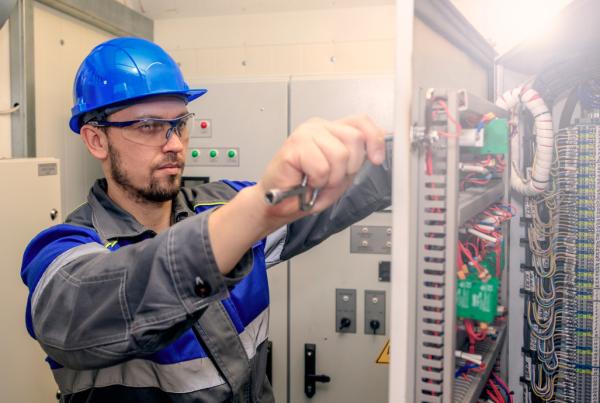Also known as Power Flow Analysis, Load Flow Analysis is a method used by electrical contractors to detect issues in power systems, commercial networks, and grids. As the name suggests, this test checks the ‘flow’ of electricity in commercial building systems and identifies if there is a need for electrical repair or maintenance.
It also helps maintenance engineers determine the state of all equipment connected with the network, path of least resistance, overall resistance in the circuit, how much load the network can bear, and other key factors related to the electrical system. Once voltage, resistance, and power flow issues in the system or its branches are identified, preventive maintenance can take place to avoid a major breakdown in the future.
So let’s take a few minutes to discuss load flow analysis in some more detail for the industrial and commercial sector and how the study can help your facility out.
The Power Flow Study – A Large-Scale Diagnosis Solution
A power flow study is one of the most effective ways of determining issues in a system node and/or branch. There are four main quantities that this study considers:
- Voltage Magnitude
- Phase Angle
- Real Power
- Reactive Power
System nodes are defined by three main types of busses:
- A load bus.
- A generator bus.
- A slack bus.
Apart from the generator and load, the transmission line also plays an important role in determining the power flow factor of a network or grid. The larger a grid or network, the higher this transmission factor will be.
Calculating the Load Flow
There are three techniques to calculating the load flow, which includes:
- Gauss Seidel Model
- Newton Raphson Model
- Fast Decoupled Model
The basic steps electrical contractors need to follow for the calculation of load flow are:
- Modeling the power system, any components installed, transmission lines, and the network as a whole
- Developing load flow equation based on the model being followed
- Solving the equation with respect to the model and numerical values extracted.
Here is a comparison between the three approaches:
| Attribute | Gauss Seidel | Newton Raphson | Fast Decoupled |
| Complexity | Easy | Complex | Average |
| Best For | Small & medium systems | All system sizes | All system sizes |
| Accuracy | Good | Very Good | Average |
There are several key load flow analysis aspects that electrical contractors, repair personnel, and maintenance engineers need to keep in mind.
- Load flow studies the state of a power system in idle, normal operation, and under stress to see if the system can operate efficiently for a given load.
- The study solves simultaneous non-linear power equations for unknown variables in the system for every node in the system.
- These nodes are given a numerical value that reflects their efficiency of output.
Electrical contractors use load flow analysis for efficient planning of industrial and commercial systems as per their energy requirements. If you have any questions regarding your electrical system or simply want to get a quote for electrical repair or maintenance, get in contact with us today, and let’s discuss how we can help your business!




